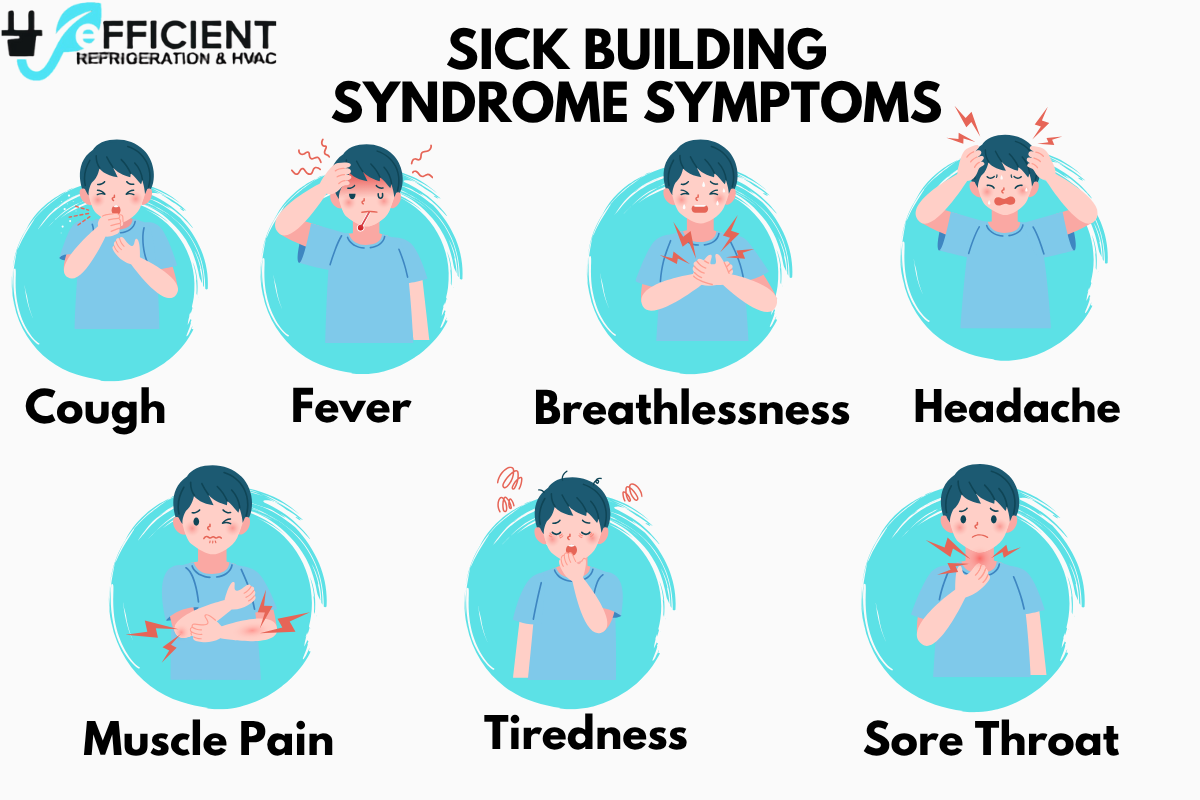Sick Building Syndrome: Causes, Symptoms, and How Proper HVAC Maintenance Can Help
Introduction
In the heart of Australia’s bustling cities, from Sydney’s high-rise offices to Perth’s commercial complexes, indoor environments play a crucial role in occupant well-being. Yet, many buildings unknowingly harbor a silent threat known as Sick Building Syndrome (SBS).
This phenomenon, often linked to poor ventilation and inefficient HVAC systems, affects comfort, productivity, and even health. In this blog, we explore what Sick Building Syndrome is, its causes, and how professional HVAC solutions in Australia can help prevent it.
Understanding Sick Building Syndrome: Causes and Definition
Sick Building Syndrome refers to a range of symptoms people experience when spending time inside certain buildings, without a clear, diagnosable illness. These symptoms typically disappear once they leave the environment, suggesting that the building itself is the problem.
Common complaints include:
Headaches and fatigue
Irritated eyes, nose, or throat
Nausea and dizziness
Dry or itchy skin
Concentration difficulties
SBS doesn’t just affect comfort, it impacts workplace performance, increases absenteeism, and can lead to reputational damage for building owners and facility managers.
What Causes Sick Building Syndrome in Australia
Several environmental and mechanical factors contribute to SBS, but inefficient HVAC systems are often the leading cause. Below are the most common triggers.
1. Poor Ventilation
Many commercial buildings operate with low air exchange rates, especially those designed for energy conservation. Without enough fresh air, pollutants accumulate and indoor air quality deteriorates.
2. Contaminants and Pollutants
Airborne particles from mold, bacteria, dust, cleaning agents, and building materials can circulate through HVAC ducts, aggravating respiratory issues and allergies.
3. Inadequate HVAC Maintenance
Dirty filters, unclean ducts, and poorly calibrated thermostats all contribute to an unhealthy indoor climate. Neglecting routine maintenance allows harmful particles to spread unchecked.
4. Humidity Imbalance
Both excessive and insufficient humidity can worsen SBS. High humidity fosters microbial growth, while low humidity leads to dryness and irritation.
5. Poor Air Distribution
Even with clean air, uneven airflow causes stagnant zones where contaminants build up, often near workstations or closed offices.
The Role of HVAC in Preventing Sick Building Syndrome
A well-designed, properly maintained HVAC system is the backbone of a healthy indoor environment. Here’s how HVAC solutions directly prevent Sick Building Syndrome in Australian buildings.
1. Improved Ventilation and Air Exchange
Modern HVAC systems are equipped to bring in fresh outdoor air and expel stale indoor air, maintaining optimal air balance and preventing contaminant buildup.
2. Advanced Filtration Systems
HEPA filters and UV-C disinfection technology capture and neutralize microscopic pollutants, including pathogens, dust, and mold spores, ensuring cleaner, safer air circulation.
3. Smart Monitoring and Automation
Through smart building automation, HVAC systems can monitor CO₂ levels, humidity, and temperature in real time. Automatic adjustments ensure continuous comfort and compliance with Australian standards.
4. Regular Preventive Maintenance
Routine servicing, including filter changes, duct cleaning, and performance calibration, ensures that the system operates at peak efficiency while maintaining superior air quality.
Australian Standards for Indoor Air Quality and HVAC Systems
Australia enforces strict regulations to promote healthier building environments. HVAC systems must comply with:
AS 1668 – Ventilation and air-conditioning in buildings
AS 3666 – Microbial control and Legionella prevention
NCC (National Construction Code) – Energy efficiency and building performance
Safe Work Australia Guidelines – Indoor air quality in workplaces
Adhering to these standards not only ensures compliance but also demonstrates a commitment to occupant health and environmental responsibility.
The Cost of Ignoring Sick Building Syndrome
Ignoring SBS can have serious financial and reputational impacts:
Lower productivity due to discomfort and illness
Higher absenteeism and staff turnover
Increased maintenance costs from emergency HVAC repairs
Legal or compliance risks if air quality standards are breached
Addressing air quality through proper HVAC management is not just a technical upgrade, it’s a strategic business decision.
HVAC Solutions for a Healthier Building Environment
At Efficient Refrigeration & HVAC, we provide comprehensive solutions designed to eliminate the root causes of Sick Building Syndrome across Australia. Our expertise includes:
Custom ventilation system design for commercial buildings
Scheduled preventive maintenance to maintain compliance
Installation of energy-efficient air purification systems
Smart building integration for real-time air quality management
Whether you operate a hospital, retail center, or corporate office, our team ensures your HVAC system delivers clean, compliant, and comfortable air every day.
Final Thoughts: Combating Sick Building Syndrome for Healthier Buildings
Sick Building Syndrome in Australia is a serious yet preventable issue. The key lies in understanding how HVAC efficiency, air quality, and maintenance intersect to create healthy indoor spaces.
By investing in professional HVAC management, building owners not only protect the well-being of their occupants but also enhance energy performance, compliance, and long-term value.
For cleaner, safer, and more efficient buildings, Efficient Refrigeration & HVAC is your trusted commercial partner.



